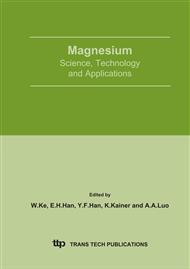p.839
p.845
p.849
p.853
p.859
p.865
p.869
p.873
p.877
Effects of Biaxial Stress Condition for Fatigue Properties of Magnesium Alloy
Abstract:
Fatigue crack propagation tests of magnesium alloy were conducted under conditions of biaxial and uniaxial loading by using a cruciform specimen with the biaxial fatigue tester. The purpose of this study is to investigate the effect of biaxial stress on the fatigue crack growth properties ⊿KⅠ-da/dN. From these comprehensive experiments, the remarkable effect was found in the specific biaxiality ratio σx 0/σy 0 on the ⊿KⅠ-da/dN relationship. When biaxiality ratio was 0.5, it turned out that the fatigue crack propagation velocity of a magnesium alloy becomes very slow. In other biaxiality ratios, fatigue crack propagation velocity was influenced in some extent. Fatigue crack propagation velocity decreases a little as the stress which acts in parallel with a crack increases.
Info:
Periodical:
Pages:
859-864
Citation:
Online since:
July 2005
Authors:
Price:
Сopyright:
© 2005 Trans Tech Publications Ltd. All Rights Reserved
Share:
Citation:


